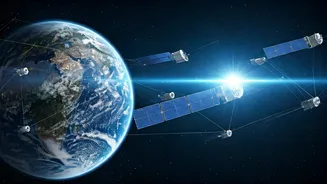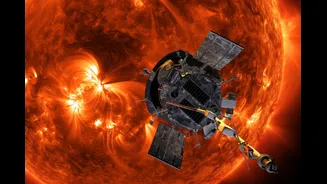Crew-10 Joins ISS
On March 16, 2025, Crew-10 successfully docked with the ISS, marking an important step in ongoing space operations. The docking was followed by the crew
changing out of their spacesuits, preparing cargo, and opening the hatch to the Harmony module. This event increased the total number of astronauts on the ISS to 11 for a short period. The new crew joined NASA astronauts Nick Hague, Sunita Williams, Butch Wilmore, and Don Pettit, along with Roscosmos cosmonauts Aleksandr Gorbunov, Alexey Ovchinin, and Ivan Vagner. This influx of personnel is a vital element of continuous space exploration and research on the ISS. The handover period is crucial for the efficient transfer of knowledge and responsibilities between the outgoing and incoming crews. The presence of multiple astronauts further enables a diverse array of scientific experiments and maintenance tasks vital for the station's operation.
Preparing for Return
The arrival of Crew-10 sets the stage for the return of Sunita Williams and Butch Wilmore, who have been stationed on the ISS. To ensure a smooth transition, NASA scheduled an overlap between Crew-9 and Crew-10. This allowed Wilmore and Williams to brief the new crew on station operations prior to their departure. This is crucial for maintaining the operational integrity of the ISS, allowing for a seamless exchange of duties and responsibilities. The departing astronauts will share their experience and knowledge of the station, facilitating the smooth continuation of ongoing research and maintenance activities. Such careful planning highlights the complexity of space missions and the importance of expertise transfer.
Mission Overlaps Explained
NASA's strategic decision to overlap Crew-9 and Crew-10 missions serves several vital purposes. Primarily, it gives Wilmore and Williams the opportunity to brief the incoming crew. Overlap ensures that the new crew is fully informed about the current procedures, ongoing experiments, and the overall conditions of the ISS. The incoming crew will also get a chance to learn directly from the astronauts they are replacing. This direct transfer of knowledge ensures that the momentum of space-based research and operation is maintained. It minimizes any potential disruption and builds continuity in the scientific work done on the ISS, as well as the routine maintenance and upkeep of the orbiting laboratory.
Launch Pad Issues
The SpaceX launch of Crew-10 was initially delayed due to a last-minute issue at the launchpad. This incident emphasizes the inherent challenges and complexities associated with space missions. The meticulous planning, rigorous testing, and the unexpected setbacks that can arise during launch are all part of the space exploration process. The delay led to an adjustment in the schedule for the ISS crew rotation. This highlights the importance of flexibility and adaptability in the space program. The launch pad issues underscore the need for constant vigilance and the readiness to handle the unexpected in order to ensure mission success. The final launch date was set after the issue was resolved and all safety measures were in place.
Crew-10's Composition
The Crew-10 mission is composed of Roscosmos cosmonaut Kirill Peskov, NASA astronauts Nichole Ayers, Anne McClain, and JAXA astronaut Takuya Onishi. These astronauts, representing international partnerships, play crucial roles in maintaining the ISS and contributing to a variety of scientific experiments. The selection of these astronauts is based on their extensive training, experience, and suitability for the long duration stay on the space station. The diverse backgrounds of the crew members also bring different perspectives and expertise to the table, further enhancing the capabilities of the mission. The international nature of the mission is representative of collaborative efforts that are characteristic of modern space exploration.













